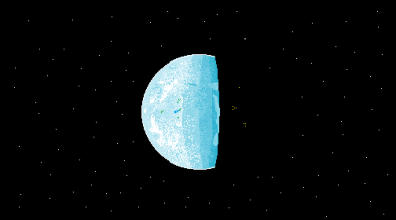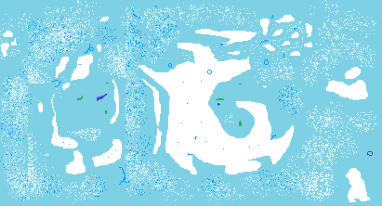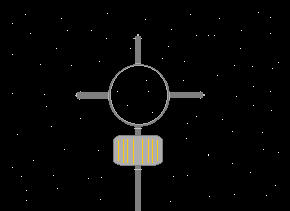
Gabatrix.net





© CMed (TheUniverseofCMed) 2021
Database and Lore

Palora, the World of Ice
“The world of ice has become a refuge to a people that had been long surrounded by a world of temperate heat,” Historian Columbo, 2320. A world of snow. Palora is often a colony remembered for its profound beauty despite its cold environment. Its people are remembered for living in the Arctic-like settings. However, Palora struggles with the future with corruption and piracy, where it must move forward, fighting it or forever be a lost colony encased in snow. History Discovered in 2295, the world of Gliesse 777 B was heralded as a small victory rivaling that of the discovery of Cebravis. It served as a habitable world tucked in an area where there shouldn’t have been one. Located far from the colder region of Gliesse 777’s habitable zone, the planet was enraptured in frozen H2O. It would serve as the polar opposite (quite literally) when compared to the future colony desert world of Cipra. During this time period, planets such as Batrice, New Olympia, Cebravis, and Oshun were already colonized in the early years of the Gabatrix Experiment and the Age of Exploration. The need to find new worlds and help spread human civilization was still being considered. The United Worlds Alliance was in its early infancy. Palora was not well received as a good candidate for colonization when it was first discovered. Its environment was deemed too cold, with the poles being encased in heavy snow. It was unveiled that some thousands of years ago, a series of meteoroid impacts would put the developing world into a global ice age. It would deeply impact much of the flora and fauna while leading to the extinction of countless animal species. A group of colonists, under Manuel Palora's leadership, considered colonizing the frozen world. Palora, a fellow Chilean, had been part of the growing movement of South and Central American people to find a new world to settle and call home after the slow abandonment of Earth. In his argument: - “A world of ice is one that offers plenty of access to water. There is little life here for humanity to deeply impact.” - “Frozen worlds are ones that can be remedied and have the longest longevity.” - “The system offers a world similar to Earth. Our people can adapt.” - “The system offers resources for our people to expand, both on the planet and neighboring worlds.” Indeed, Manuel Palora was correct. After years of exploration on the frozen world. Gliesse 777 B, the expeditions would showcase viable areas for settlement. While the oxygen content wasn’t as good as other habitable worlds, the planet had access to geothermal energy. Numerous volcanoes dot the surface, providing access to countless hot springs. Areas, such as the equator, were the warmest, with a few small areas where the water had melted and formed areas of green tundra. There was plenty of space to establish cities in these regions. With a small human population, there was nothing but land to settle and call home. Another major area of importance was the neighboring shattered worlds, later named Picaro and Oracip. It was believed that the world of Picaro had been smashed by a rogue planet that wandered into the system. The catastrophic collision would tear Picaro apart, and their remains would settle and form an asteroid belt that revolved around Gliesse 777. It was also further theorized that the frozen world of Gliesse 777 B’s radically changed environment was due to some of the shattered remains of Picaro that crashed onto its surface. However, instead of seeing nothing but floating rocks, Palora believed that the great asteroid belt was nothing but an opportunity. In his final proceedings, he believed that the planet should be established as a colony to help serve as a mining hub for the neighboring asteroid belt. In 2301, the first colony ships would land on the frozen world for the colonists to call home, although it wouldn’t be until 2305 before the first cities were completed in construction. Named after its founder, Palora quickly expanded, forming numerous small cities, with Temuco Nueva being the largest. Most of the bigger cities are located in the flat tundra region near the great Paloran Cordoba Mountains, a sizeable area of high elevation and blanketed snow that covers a lot of the landscape. The rest are located near the largest melted lake in the flatter, warmer Great Basin de Geuva. In 2303, two UHN military outposts were established in Valdivia and Valradena in the Picaro asteroid belt. They would serve as checkpoints for commercial mining vessels to begin harvesting the countless rocks for construction material. All seemed well during the early years of Palora, with the media claiming that Palora was likely to become a new Batrice in terms of mining and business ventures being able to expand the entirety of the UWA’s economy as a whole. Despite the cold climate, many Palorans are happy to call their frozen world home with a small tourist population that often comes to enjoy the numerous hot springs. Eco-tourists often come to enjoy the enormous ice trees that rival any known tree that used to exist on Earth. However, by 2311, a series of freighters would disappear in the Picaro asteroid fields. Attacks had started to surface about a pirate organization known as the Nova Hamidou, named the Novans for short. As the attacks grew, so did their resolve to plunder and pillage commercial vessels that were mining in the asteroid field. The biggest issue for the UHN at the time was the dense field of rocks. Most commercial mining ships had to be heavily armored and slow to venture into the deep fields. Simple trips into the asteroid field could erode the hulls of most vessels. Smaller craft, such as shuttles, generally could better maneuver around the rocks, but even they had to be reinforced for prolonged ventures. The military had little means to stop the pirates. The few victories against them were far from stopping their acts of terrorism. By early 2315, the UHN had to place a regular defense program in place to help protect the civilian ships in the area. Defenses were increased in various areas of the field, and Valradena and Valdivia were heavily armed to help eliminate acts of piracy. Patrols would be mounted to venture around the edge of the field and help deter the possibility of pirate attacks. While effective at first, the pirates only became more emboldened. Ultimately, piracy and crime caused a massive decline in Palora's developing economy. Corruption had also started to weave into politics as early as 2320 to 2330. While the Paloran economy was weak, the population had reached around 150,000 people by 2328. The infrastructure was still in its infancy, but growth was still much slower than expected. According to Manuel Palora at the time: “I had high hopes for this colony. I expected to see countless people from Earth and Cebravis move in, but I’ve only watched a world choke. I watched one politician take the taxpayer money needed for infrastructure to later be used to buy a yacht for his family. Every time I did something to stamp it out, other corrupted individuals took their places.” Regrettably, Manuel Palora would pass away in 2345. While he conducted a series of reforms that helped purge a lot of the corruption by the time of his death, the fact remained that Palora had been a staggered colony. This isn’t by any means a completely failed economy, nor is it a failed colony world, far from it. Palora’s mining still took a sizeable percentage of the UWA economy, and it was starting to compete with some of the Batrice mining guild ventures. If anything, Batrice had vested interests in the Picaran asteroid field. By 2349, Palora has a population of around 270,000 people. While Spanish is a language spoken by the general population, it’s not the official language. English and Chinese are still the dominant languages for the people; however, the Spanish influence remains strong. Even cities are often named after former Caribbean, Central, and South American locations. Regardless of the setbacks in Palora, the people have remained determined. The planet still offers plenty of room to expand and settle. Manuel Palora has often been considered to be correct in his assumptions that if his planet overcame its problems, it would flourish and rival the other colonies with ease. Palora is slightly larger than Earth and has 10% more gravity. Options have been considered to warm the planet, but fear resides that the high amount of frozen water would produce a planet similar to Oshun, being an overflooded mess that would stamp out the ever-developing cities. Instead, the problems are ones that the population knows quite well. If they are to flourish, they need to cleanse corruption and crime, and the industries and economy will improve. The rest will surely follow, eventually calling Palora “The Frozen Paradise.”

Palora as seen from orbit. The
topgraphical map shows nothing but
frozen ice and mountains with heavy
layers of snow
Palora’s Flag borrows some elements of
Brazil’s flag. Fort Redentor (as seen below) is
named after the statue of Redentor, a
famous Brazilian landmark.
















